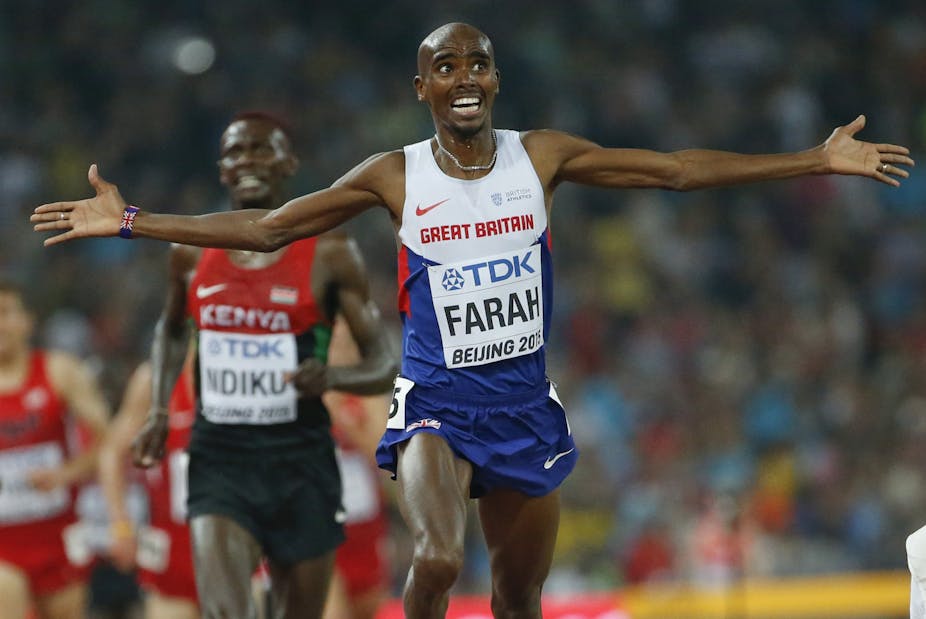The contrast between the recent announcement of a decline in overall participation in sport in England and British athletes’ successes in the World Championships in Beijing stands as a prime example of the differing fortunes of grassroots and elite sport.
It has become almost customary for British athletes to deliver gold medals on the global stage while, closer to home, there are no signs of improvement in long-term trends in sport participation. Current figures indicate that fewer that one in five of the adult population take part in sporting activities three or more times a week.
On the back of these figures, Tracey Crouch, the new minister for sport, has launched a public consultation to inform a new government strategy. But it would be a major surprise if the forthcoming strategy brings much deviation to the current model of elite sport development that has brought so much success. Instead, as has been the case on numerous occasions before, a major reorientation of the national approach to sport participation may be on its way as Crouch has promised to “rip up” the existing strategy and “start again”
This historical lack of continuity has contributed to the absence of any improvement in sport participation rates. However, as recent approaches to developing participation have unsuccessfully mirrored those enacted for elite sport, there may be some merit in changing tack.
Carrot and stick approach
UK Sport and Sport England, the national agencies responsible for elite and grassroots sport respectively, have both implemented top-down “carrot and stick” approaches to distributing the exchequer and National Lottery funds at their disposal. Particular sports, and specifically their individual national governing bodies, have seen their funding increased or removed depending on their success or failure in achieving set targets for the number of medals won or participation rates.
There are, however, readily identifiable reasons why this approach has proved effective in elite sport but not in grassroots sport. First of all, the setting of medal targets offers a simple and effective gauge of elite sport success, but doing so for participation is far more challenging.
Since 2005, sport participation in England has been measured through the national Active People Survey. Criticisms that this survey offers a blunt instrument upon which to base funding decisions may be one reason why Sport England have launched a further consultation on how sport participation could be better measured.

However, designing nationally appropriate participation measures and targets is always likely to oversimplify a complex problem. This is especially the case when taking into account issues such as a desirable frequency of participation, differences in formal and informal sport participation and natural fluctuations across seasons and time.
Diversifying funding
It is also unrealistic to expect that widespread sport participation can be developed through streamlined systems similar to those which national governing bodies – such as British Rowing – use to provide specialist support for elite athletes.
Rather, a diverse array of organisations including schools and other educational establishments, sports clubs, charities and community groups, local authorities and health agencies, all have important roles in promoting and providing opportunities for sport participation. The suggestion that the forthcoming sport strategy will diversify existing funding streams may well be of benefit to some of these organisations.
However, this diversification could also lead to increased competition for scarce funding. If so then it will only serve to reinforce the current fragmentation and lack of coordination among organisations that work to address participation.
A deeper problem?
The greatest barrier to increasing sport participation may, nevertheless, be a problem that is shared with elite sport.
As with society in general, inequality continues to be deeply entrenched across all levels of sport. For example, a disproportionate number (37%) of Team GB medal winners at the London 2012 Olympics had previously attended private schools. Unfortunately, this statistic may not concern policy makers, especially when improvements in talent identification are one reason why elite sport success is not dependent on widening the participation base.
But inequality has long plagued grassroots sport as well and, in an age of austerity, gaps in sport participation rates between lower and higher social class groups have increased.
As has been argued elsewhere, this reproduction of wider societal inequalities gives rise to depressing conclusions for those hoping that a revised strategy may help boost participation in sport. Instead, those responsible for sport policy may be relatively powerless to address significant determinants of participation that are beyond their control.

